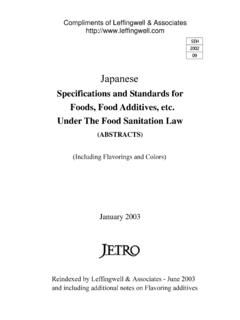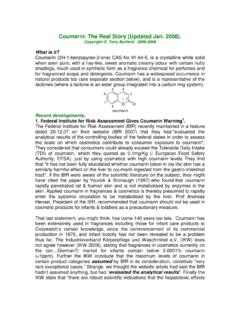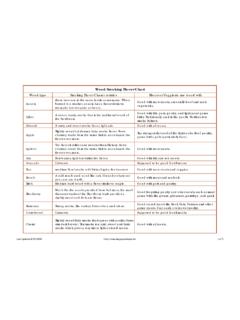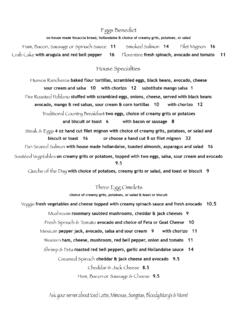Transcription of COVER DESIGN - Leffingwell & Associates
1 COVER DESIGN The authors wish to express their appreciation to the Arents Collections of the New York Public Library (Astor, Lenox and Tilden Foundations) for permission to use the modified reproduction of the Ariel Baynes drawing which is incorporated into the COVER DESIGN . TOBACCO FLAVORING FOR SMOKING PRODUCTS by John C. Leffingwell Harvey J. Young Edward Bernasek R. J. REYNOLDS TOBACCO COMPANY 1972 Winston-Salem, North Carolina CONTENTS Page Introduction .. 3 Tobaccos and Blends Used in Smoking Products .. 4 The Role of Casings in Flavoring of Smoking Products .. 6 The Role of Top Flavoring Materials in Smoking Products: Science and Art.
2 7 Evaluation of Specific Flavoring Materials .. 1 0 Table I -Organic Acids .. 11 Table II -Amino Acids .. 15 Table III -Alcohols .. 16 Table IV -Aldehydes, Acetals .. 19 Table V -Amides, Amines .. 22 Table VI -Anhydrides .. 23 Table VII -Esters .. 24 Table VIII-Ethers, Pyrones .. 36 Table IX -Imides .. 38 Table X-Ketones .. 38 Table XI -Lactones .. 45 Table XII -Phenols .. 4 7 Table XIII -Pyridines, Quinolines, Indoles .. 48 Table XIV -Pyrazines, Dihydropyrazines .. 49 Table XV-Pyrroles .. 52 Table XVI-Sulfur Compounds .. 52 Table XVII -Herbs, Essential Oils, Extracts.
3 52 Table XVIII -Hydrocarbons and Miscellaneous .. 60 Selection of Flavoring Materials .. 61 Flavorant Use Levels .. 63 Acknowledgment .. 65 Bibliography .. 66 2 INTRODUCTION The use of tobacco products for smoking enjoyment in the Western Hemisphere predates the discovery of America by hundreds of years ( 14, 21, 33, 55, 69). The native Indians had long known of the pleasure and satisfaction to be derived from chewing or smoking (in pipes and cigarillo form) the leaves of Nicotiana. In fact, when Cortez's Mexican Expedition landed at Tabasco in 1519, the use of tobacco in a very advanced form-the flavored cigarillo-had apparently been a long time tradition.
4 It is known that the Indians of this area, smoking the forerunner of today's cigarette, often flavored their tobacco with the oil of citrus peels. The advent of European explorers to the New World opened new vistas for tobacco. Over the next 150 years a brisk international trade developed with Europe, the Indies and China through the efforts of sailing captains and trading companies in search of new commodities. Today, the tobacco industry stands as one of the world's leading businesses in both volume and revenue, exceeding such commodities as coffee, cocoa, tea, nylon and rayon ( 1 9).
5 The two largest producers of tobacco are the United States (819,000 metric tons) and China (776,000 metric tons), followed by India and the Union of Soviet Socialist Republics ( 19). Consumer tobacco products commonly manufactured throughout the world are cigarettes, pipe tobaccos, cigars and cigarillos as well as other forms of tobacco such as snuff and chewing tobaccos. This monograph will be limited to a short discussion of the major types of tobaccos and primarily to the vast amount of data accumulated over many years on flavoring components useful in smoking products.
6 The smoking flavor of a tobacco product is due primarily to the types, grades and blends of tobacco employed. The flavor specialist has the task of improving, mellowing and modifying the tobacco aroma and taste to fit the desires of the consuming public. Just as the blends and types of tobaccos used are determining factors in the DESIGN of a product, the flavorings which are added greatly influence the quality and acceptability of the finished product. 3 TOBACCOS AND BLENDS USED IN SMOKING PRODUCTS (2, 15,122,126, 127) The major types of tobaccos commonly used in smoking products are Burley, flue-cured (Virginia, bright leaf), Oriental (Turkish, Greek, Yugoslav), cigar types and, to a lesser degree, Maryland.
7 In addition to these major classes, Latakia, Perique and various types of fire-cured and air-cured tobaccos are employed to impart special types of flavors to smoking products. The blends of tobacco used in cigars, cigarettes and pipe tobaccos vary considerably in different countries and much of the characteristic flavor of the finished product is imparted from the types of tobacco used. The smoking flavor of tobacco leaf, even of the same type, may vary considerably depending on the location in which it is grown, seasonal climatic conditions, agricultural and post-agricultural practices employed and the location of the leaf on the tobacco stalk~ The tobacco farmer often separates the leaf according to its stalk position and, at the time of sale, these groupings of tobacco are given specific quality grades by leaf buyers representing the major tobacco manufacturers.
8 The leaf buyer is trained to recognize the quality of tobacco leaf by appearance. A good buyer can easily identify tobaccos with good filling capacity ( , the weight of tobacco required to firmly fill a cigarette), high flavor and can even estimate the percentage of nicotine content by rapid inspection of a pile of tobacco. Flue-cured tobacco comprises about 60 percent of the tobacco grown in the United States and derives its name from the "flues" of the heating apparatus originally used in the curing barns (122). Flue-cured is often referred to as Virginia or bright leaf due to the characteristic golden or yellow coloring.
9 Flue-cured tobacco is principally used in cigarettes and its smoke possesses a "sweet" aromatic character and slightly acidic taste. Flue-cured contains significantly higher levels of reducing sugars than the common light air-cured tobaccos ( , Burley and Maryland). It blends well with these latter tobaccos because, on smoking, the presence of sugar in flue-cured smooths and "neutralizes" the more "basic" (pH) smoke of air-cured varieties. Burley is a light air-cured tobacco which normally is light brown to reddish brown in appearance and possesses excellent smoking characteristics for blended cigarettes and pipe tobaccos.
10 It provides somewhat greater filling capacity in cigarettes than flue-cured. The flavor and aroma of Burley tobacco smoke may be described as having a "chocolate, nutty, protein, winey" character and is more "basic" (pH) than the smoke of flue-cured tobacco. Burley more readily accepts casing (sauce materials) than tobaccos which have a higher volatile oil content ( , flue-cured and Oriental). Because Burley is low in sugars (which are metabolized during the slow air curing process) it is usually necessary to add sugars or blend with flue-cured tobacco to compensate for this deficiency, thus mellowing its "basic" (pH) smoke characteristic.














